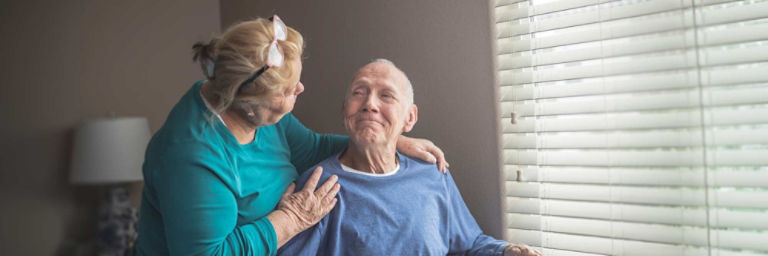Volunteering with hospice
Becoming a hospice volunteer in Minnesota or western Wisconsin
Becoming a hospice volunteer is more than just lending a helping hand – it’s a chance to make a significant impact during the time that a patient and their family need your help the most.
Giving your time and energy to those at the end of their life can be a rewarding experience, and we hope that you’ll join the ranks of our compassionate hospice care volunteers who serve those in times of need.
Hospice volunteers are very important members of the hospice care team. Most hospice care volunteers spend time with patients, but volunteers are also needed to do administrative work like send mailings and make phone calls.
You may know exactly what you want to do as a hospice volunteer, but if you’re unsure, that’s okay too. We’ll help you figure it out, and you can change your responsibilities over time. Some ways that a hospice volunteer may help patients and their families include:
Providing companionship
Hospice volunteers spend time with patients, offering comfort and support. It’s up to you and the patient to decide what to do. Some popular activities include talking, sharing hobbies, listening to music or going for a short walk.
Supporting caregivers (caregiver respite)
Acting as a caregiver for someone with a life-limiting disease can be physically and emotionally exhausting. By being a companion to a person receiving hospice care, you also support caregivers and give them a little time to take care of their own needs.
Veteran volunteers provide support to veteran hospice patients and can offer a unique ability to relate and connect with patients who are veterans.
Pet therapy
Some volunteers brighten a person’s day with a visit from a lovable, furry friend. Therapy pets must be certified through
Helping with a legacy project
As part of hospice care, we encourage people to think of the impact they’ve had during their lives and how they want to be remembered. A legacy project is a way for people to create something meaningful or memorable through writing, music, art or another creative process. Volunteers who help with legacy projects may help a person write their life story or craft letters to loved ones.
Providing bedside vigil when the end is near
Some volunteers provide a reassuring presence to patients during their last 48 to 72 hours of life. We call these volunteers 11th hour companions or vigil volunteers. These volunteers may also provide respite support to caregivers, allowing them to take a break, rest or shower.
Sending mailings and making phone calls
We also need volunteers to help with administrative work like sending mailings and making phone calls. This includes check-in calls to new patients, and bereavement mailings and phone calls to grieving families.
Who can be a hospice volunteer
Volunteers should be at least 18 years old and able to make about four visits a month. You’ll likely be a great hospice volunteer if you have:
- A positive attitude
- Great listening skills
- Strong communication
- Open mindedness and flexibility
- Maturity and respect for others
- A genuine desire to help others
People are often inspired to become a hospice volunteer after the passing of a loved one. But it takes time to heal from the loss of a loved one, and during this time, it can be difficult to spend time with people who have life-limiting illnesses. So we typically recommend that people wait to volunteer until it’s been at least one year since any significant loss in their life. But if it’s in your heart to volunteer, let us know. There are ways to support our hospice programs that don’t involve patient companionship.
All necessary training will be provided
You don’t need any special expertise to become a hospice volunteer. You’ll receive comprehensive training to make sure you’re comfortable with what to do. Onboarding includes a combination of virtual and in-person training. We also offer continuing education on a variety of hospice-related topics.
Take the next step to becoming a hospice volunteer
The first step to becoming a hospice volunteer is to apply. Then there may be a phone or in-person interview, reference check, background study, health screening, orientation and training. Volunteer screening and orientation takes about 3-4 weeks from when we receive your completed application.
Our hospice programs support patients in different areas of Minnesota and western Wisconsin – and hospice volunteers are a highly valued part of all our programs. While you can certainly apply for any of the programs, most people choose the program that’s closest to them. If you’re not sure which program would be best for you, call any of the numbers listed below. We’ll be happy to help you figure it out
